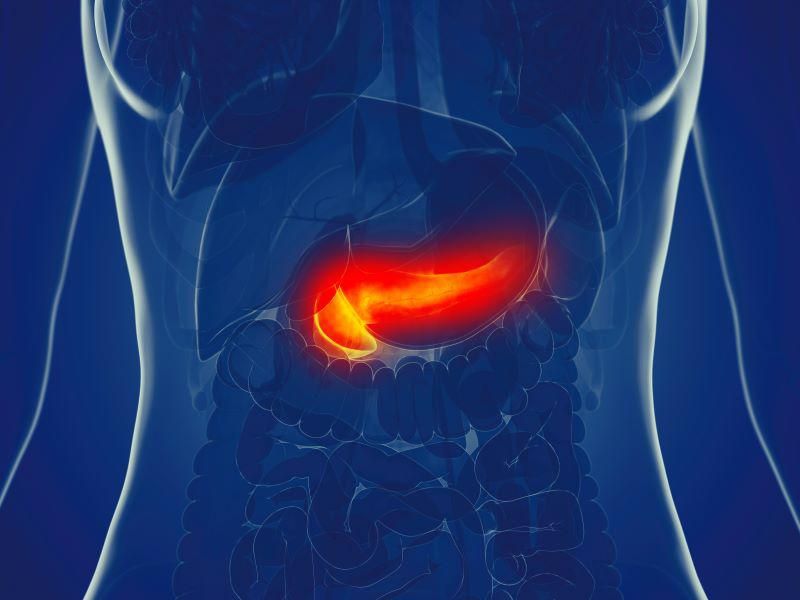WEDNESDAY, Aug. 10, 2022 (HealthDay News) — Radiomics-based machine learning (ML) models can detect pancreatic ductal adenocarcinoma (PDAC) from prediagnostic computed tomography (CT) images, according to a study published online June 30 in Gastroenterology.
Sovanlal Mukherjee, Ph.D., from the Mayo Clinic in Rochester, Minnesota, and colleagues used radiomics-based ML models to detect PDAC at the prediagnostic stage (three to 36 months prior to clinical diagnosis) and compared the performance to that of radiologists. Volumetric pancreas segmentation was performed on prediagnostic CT images of 155 patients and 265 individuals with normal pancreas. Thirty-four first-order and gray-level radiomic features were selected.
The median time from the prediagnostic CT of the test subject to PDAC diagnosis was 386 days. The researchers found that for classification of CTs into prediagnostic versus normal, the Support Vector Machine (SVM) model had highest sensitivity, specificity, F-1 score, area under the curve (AUC), and accuracy (95.5, 90.3, 89.5, 0.98, and 92.2 percent, respectively). Comparable AUCs were seen for the other three ML models: K-Nearest Neighbor, Random Forest, and XGBoost (0.95, 0.95, and 0.96, respectively). The high specificity of the SVM model was generalizable to the independent internal model and external National Institutes of Health dataset (92.6 and 96.2 percent, respectively). Inter-reader radiologist agreement was fair, and the median AUC was 0.66, which was lower than any of the ML models.
“Prospective validation of these ML models and their integration with complementary blood and other fluid-based biomarkers has the potential to further improve cancer prediction capabilities at the prediagnostic or symptom-free stage,” the authors write.
Abstract/Full Text (subscription or payment may be required)
Copyright © 2022 HealthDay. All rights reserved.


